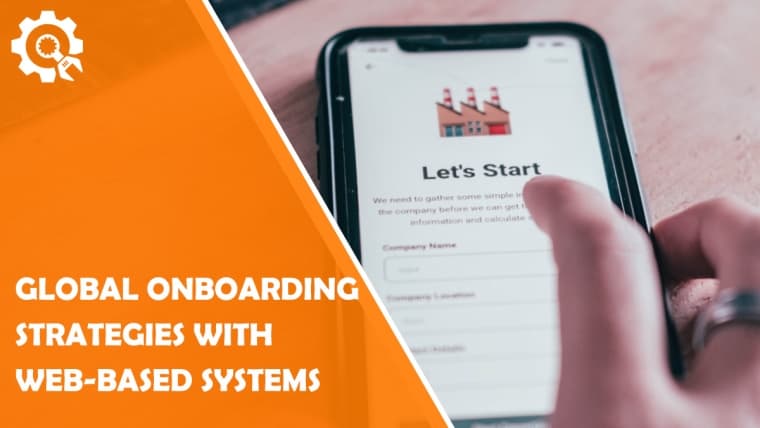The process can be complex and time-consuming when it comes to bringing employees on board in a global context. To ensure an onboarding experience for employees all over the world, it is essential to have efficient strategies in place. In this blog, we will explore the advantages of utilizing web-based systems for onboarding and discuss key tactics that organizations can implement to streamline the process.
The Power of Web-Based Systems
Web-based systems have revolutionized business operations and communication. When it comes to onboarding, these systems have helped working professionals understand what onboarding means and how it helps establish global teams. Thus, here are the benefits if you plan to incorporate a web-based onboarding system into your organization.
1. Improved Accessibility
Web-based onboarding systems eliminate limitations by providing access to resources to an organization’s employees with an internet connection. Employees can conveniently complete documents, watch training videos, and remotely connect with mentors or colleagues through platforms.
2. Consistent Experience
Standardizing the onboarding process ensures that all new employees have an experience regardless of location.
Web-based systems provide resources such as handbooks, policies, and training modules that are easily accessible to all new hires.
Strategies for Onboarding
Now that we recognize the potential of web-based systems in facilitating onboarding, let’s explore some practical approaches that organizations can adopt;
1. Preparing for Onboarding
Sending welcome packs before an employee’s first day is helpful. It should have essential information about the company culture, values, and expectations. Also, granting access to employment training materials through a web portal allows employees to familiarize themselves with relevant content before they start.
2. Virtual Onboarding Buddies/Mentors
Assigning mentors or buddies to hires is a way to help them adjust to team-specific norms within the company. Leveraging video conferencing with easy text to video and vice-versa conversion for better understanding, and using messaging platforms integrated into web-based systems enables buddies/mentors to provide guidance, answer questions, and offer support throughout onboarding.
3. Interactive Training Modules
Traditional training methods can lack engagement elements for remote employees. Enhancing the training experience with modules incorporating quizzes, interactive videos, simulations and employee engagement tools helps keep hires engaged and facilitates better knowledge retention.
4. Using Chatbots
Employees can quickly find answers to frequently asked questions by integrating chatbot functionalities into web-based systems. Chatbots can assist hires with procedures, provide guidance on accessing systems or resources, and address any inquiries regarding company policies.
5. Continuous Communication Channels
Create communication channels like Slack channels, intranet forums, or online communities where new hires can engage with their colleagues and access information after the initial onboarding phase. Encourage collaboration across teams, sharing of knowledge, and building relationships to foster a sense of belonging within a globally distributed team.
6. Evaluating the Success of Onboarding. Collecting Feedback
Create metrics to assess the effectiveness of onboarding strategies on a scale. Utilize surveys or feedback loops to gather insights from new employees about their onboarding experience.
Analyze the data collected to pinpoint improvement areas and make adjustments to enhance the onboarding process.
7. Localization and Cultural Sensitivity
Recognize the significance of sensitivity when welcoming employees from regions or countries.
Adapt training materials, language, and terminology to align with norms. Incorporate localized examples to ensure understanding and engagement for new hires from diverse cultures.
8. Continuous Learning Opportunities
Ensure that onboarding is not limited to newcomers’ initial days at the company but extends beyond that timeframe. Provide learning opportunities through web-based systems or learning management platforms, enabling employees to acquire new skills and stay updated with industry trends. Offer virtual workshops, webinars, or e-learning courses that facilitate continuous growth and development within the organization.
Conclusion
By integrating modern systems and methods into the onboarding process, companies can overcome geographical limitations, establish a unified work environment, promote employee involvement, and ensure that new hires start on the right foot. It’s important to remember that adopting a people-focused mindset and using technology can create an onboarding experience that strengthens a feeling of belonging in our interconnected world. Therefore, don’t hesitate to push your limits and implement onboarding practices today!
